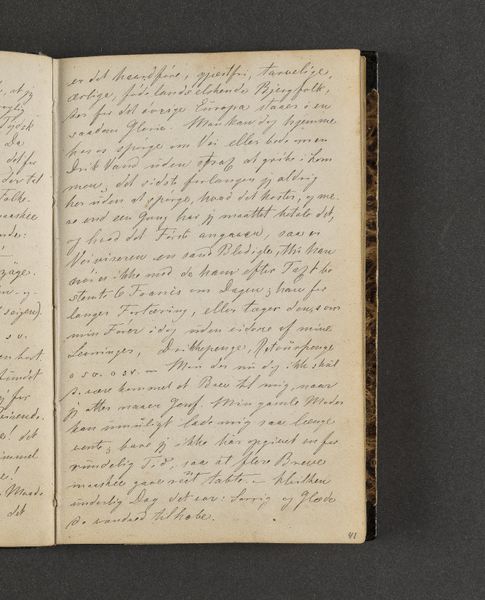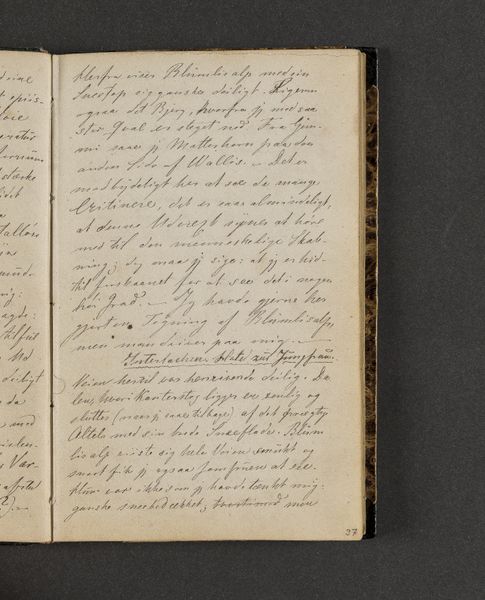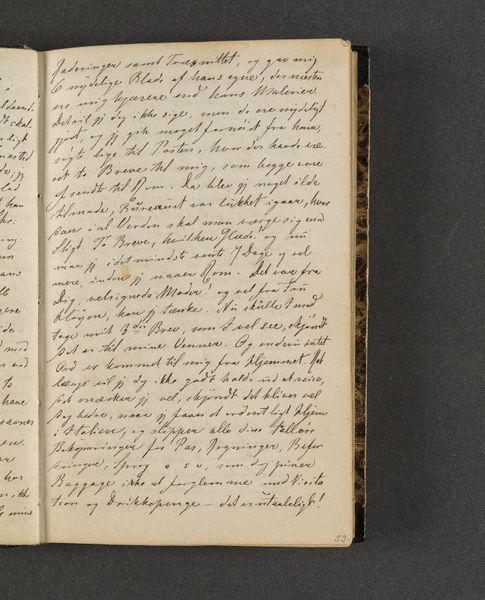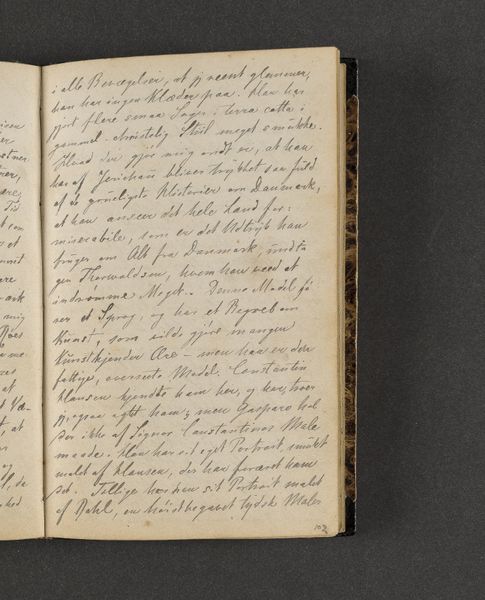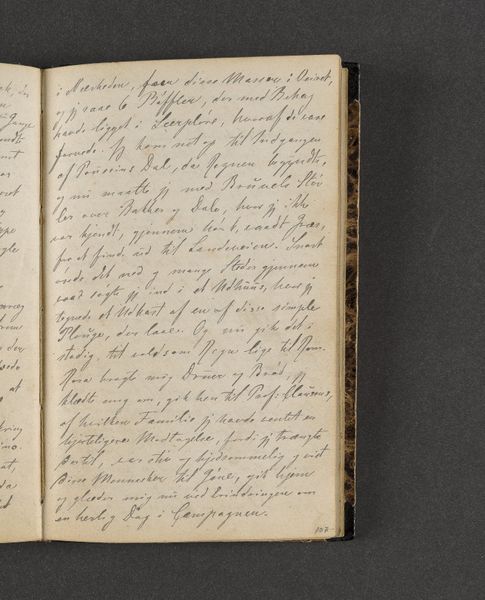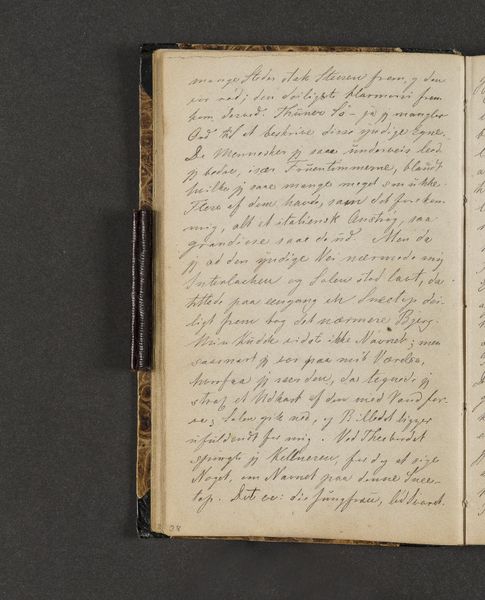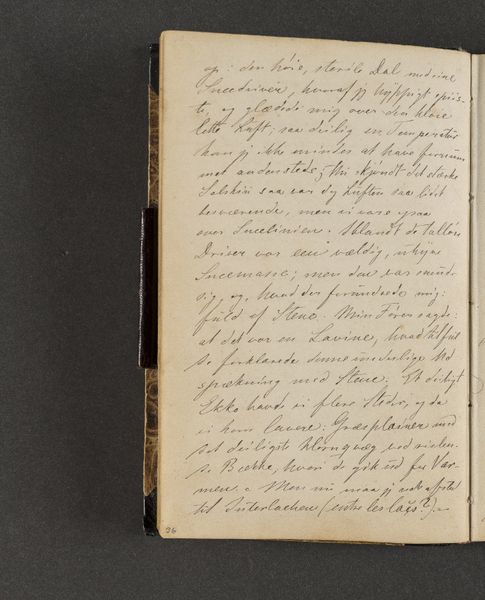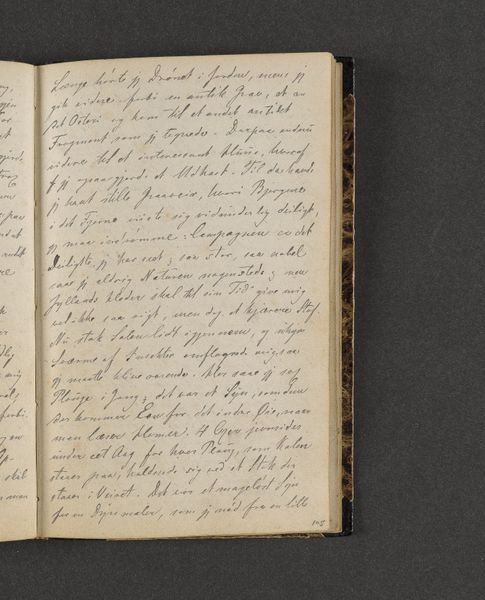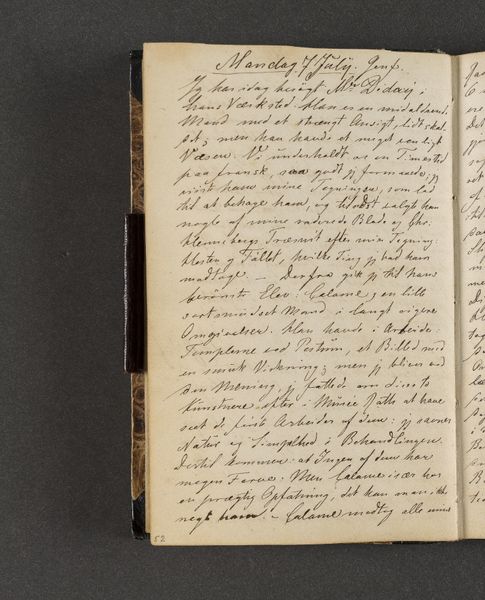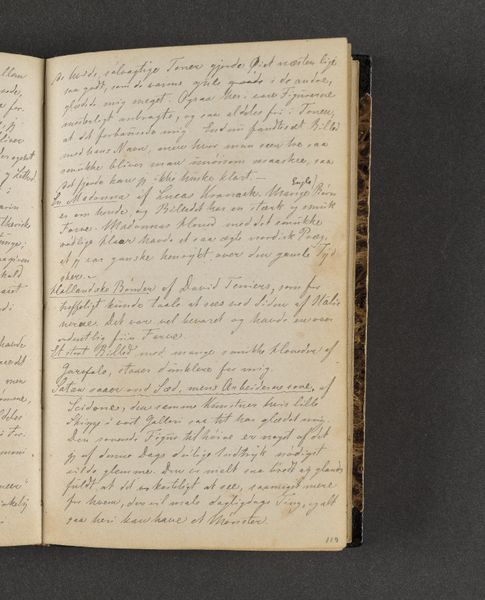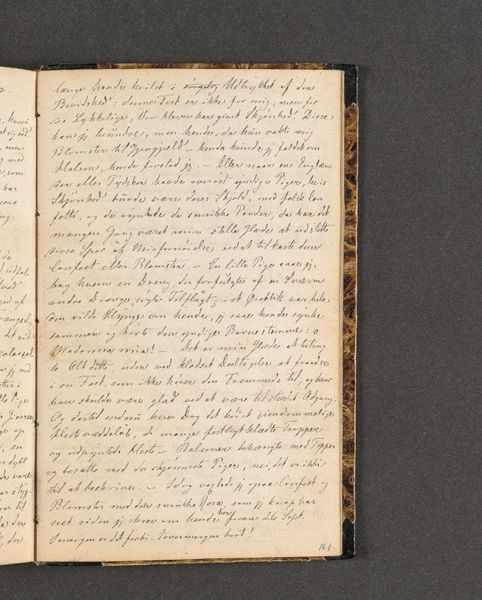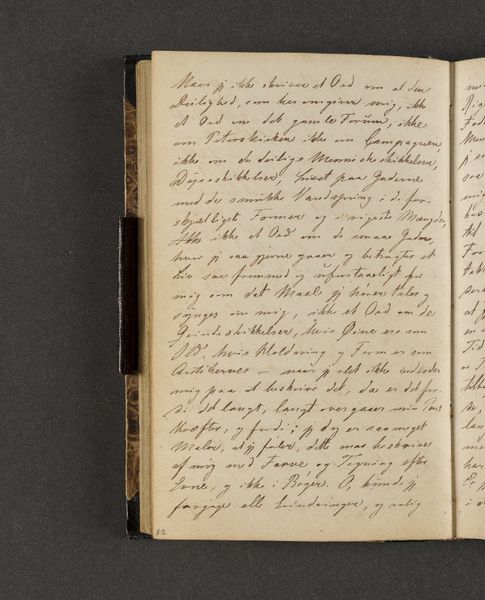
drawing, paper, ink
#
drawing
#
paper
#
ink
Dimensions: 161 mm (height) x 103 mm (width) x 11 mm (depth) (monteringsmaal)
Curator: Editor: Here we have "Rejsedagbog," or "Travel Journal," created in 1845 by Johan Thomas Lundbye, using ink on paper. At first glance, the faded ink and tight script give the piece a feeling of intimacy and perhaps… melancholy? It feels like peeking into a private world. What stands out to you? Curator: It does evoke that sense of intimacy, doesn't it? Looking at it, I imagine Lundbye on his travels, jotting down impressions as they come to him. I picture him sketching in the sunlight, then returning inside to write these dense passages. Can't you almost feel the weight of his thoughts pressing down on the page? Editor: Definitely. But the writing is so dense. I can't read Danish, but do you get a sense of what he might be writing about? Is it factual, like observations of the landscape, or more personal reflections? Curator: Probably a bit of both, actually. I think landscape was often a conduit for personal reflection for artists in this period. These travel journals became ways of not only recording physical spaces, but internal ones. A way to map the landscape of the self, through close looking at nature. I almost feel as though these entries, by the way that they cascade into each other, are landscapes in themselves. Editor: That’s a really interesting way to think about it. I’d never considered calligraphy as a reflection of landscape, almost as an abstraction in a sense. Curator: Right? It's about mark-making as meditation, I suppose. We look at art and expect a certain level of direct representation, when in truth, art has always invited the spectator into something else – another world. Editor: This makes me appreciate how art goes beyond mere documentation, showing us new ways of seeing the external world while reflecting on internal experience. Thanks.
Comments
No comments
Be the first to comment and join the conversation on the ultimate creative platform.
